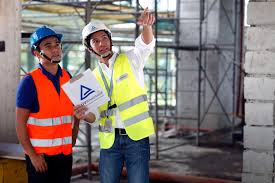
INDIANAPOLIS — In a room filled with energy, determination, and the sound of opportunity knocking, a group of aspiring construction workers gathers with one shared goal — to rebuild their lives and their communities.
For Craig Jackson, the path here was anything but easy.

"I fell off into the juvenile system pretty young, around 16," Jackson recalled. "People tell you, ‘If you do this, you’ll never come back from it,’ but I want to prove them wrong.”
Jackson is not alone in this journey. Monique Mcguire, who grew up on the East Side of Indianapolis, is equally determined to turn her life experiences into something positive.
"I want to give back to my community. I love where I live, and I want to help reshape it," Mcguire said.
Both Jackson and Mcguire see construction not just as a job, but as a pathway to purpose — a way to contribute meaningfully to a city that has shaped them.
The challenge is clear: Indiana’s construction industry has thousands of open positions but struggles to connect with willing, qualified workers.
"There are a lot of construction jobs open with no one applying, while many individuals returning to our community are without work," said Tawnya McCrary, deputy director of PACE (Public Advocates in Community Re-Entry).
According to the Indiana Construction Roundtable Foundation (ICRF), the state expects 100,000 construction job openings in the coming years — a wave of opportunity that programs like this aim to meet head-on.

PACE and ICRF have joined forces to close this gap by providing training and career pathways for people reentering society after incarceration.
"We don't want individuals to come back into our community, not find work. Not have access to jobs, not have access to income, because then what happens — they recidivate," McCrary said.
The program offers hands-on construction skills training, safety certifications, mentorship, and direct connections to employers who are ready to hire.
Over the next several weeks, trainees will learn trades that could lead to long-term careers, financial stability, and personal growth. For Jackson, the program represents something far greater than a paycheck.
"You can always fix your past. You can always come back to a brighter future," he said.
Leaders say this initiative not only fills workforce gaps but also strengthens neighborhoods, reduces crime, and creates a ripple effect of change. When participants secure employment, they can support their families, contribute to local economies, and become role models for others who may be struggling.
For many in the program, construction training is the bridge between a difficult past and a hopeful future — proof that with the right tools and opportunities, lives can be reshaped brick by brick.
Originally reported by Adam Schumes in WRTV.